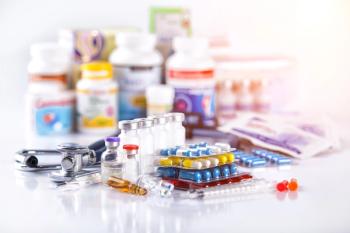
- Volume 0 0
compounding HOTLINE
Q:I am compounding a preparation intended toadminister testosterone and dehydroepiandrosteronetransdermally, but the gel keeps "breaking."Iam using a carbomer/alcohol/water gel that is preserved anda small amount of ethanol as the levigating agent.
A:Compounding hormones and/or other active ingredientsinto gel basis for transdermal administration isa widely accepted pharmaceutical practice and iswell-documented in the literature. Clinical observation andmonitoring of appropriate markers during this therapy can bebeneficial to the patient—the goal of extemporaneously compoundedtherapy is individual outcome. A key component oftransdermal gels is of a penetration enhancer such as isopropylpalmitate/lecithin (50/50 w/w; Lipoil). In this combination,phospholipids/micelles are liberated from the solubilizedlecithin. Phospholipids are well-known to aid the transport ofactive ingredients into the skin for absorption. The penetrationenhancer usually is incorporated as 22% to 24% of the formulationand probably should be included here.
As to the "broken"gel, carbomer gels are pH-sensitive andalso can break when overloaded with ingredients. Literaturereferences point to the use of a poloxamer gel at 20% to 30%concentration in water (Pluronic F127 NF or Polox), a clearsolution at refrigerated temperatures that becomes a semisolidat room-to-body temperatures. This behavior allows thematerial to remain in place where applied to the skin, insteadof running off as a carbomer or methylcellulose gel might.
Mr. Erickson is director of professional affairs at Gallipot Inc.
Articles in this issue
over 18 years ago
can you READ these Rxs?over 18 years ago
Pseudoephedrine Logs Need Constant Tendingover 18 years ago
Another Federal Court Rejects a Drug Importation Planover 18 years ago
Home Infusion Therapy Gets Patients Out of the Hospitalover 18 years ago
RESPy AWARD: Teamwork Is the Thread That Bindsover 18 years ago
Child-resistant Does Not Mean Childproofover 18 years ago
ccpa SPEAKS OUT: CCPA Works to Improve Medicare Part Dover 18 years ago
Genetic Testing: Remarkable Resource or Invasion of Privacy?over 18 years ago
case STUDIESover 18 years ago
Risperidone May Treat Autism BehaviorsNewsletter
Stay informed on drug updates, treatment guidelines, and pharmacy practice trends—subscribe to Pharmacy Times for weekly clinical insights.


















































































































































































































